Persistence and 'a little bit of craziness' keeps Treasure Coast shipwreck salvor afloat
Treasure hunting is in Michael Perna's blood.
"There’s just really no doing anything else,” the professional historic shipwreck salvor said.
Years ago, he researched how to get out on the treasure salvage boats that dotted about a 35-mile stretch of ocean off the Treasure Coast. It's where the 1715 fleet of 11 Spanish ships sunk in a hurricane July 31, 1715, later inspiring the Treasure Coast's name. The treasure-laden ships are now strewn about the ocean floor from Sebastian to the St. Lucie Nuclear Plant.
Perna, of Vero Beach, got his dive certification, wound up on a boat and never looked back.
He’s been scouring the ocean floor ever since, for more than 20 years. He's found 1,500 coins, a candelabra set and a solid silver lion, among many other artifacts.
For the past five years, he's been working a mile-long area off Ambersand Beach in north Indian River County.
“Guys like myself, who know about the methodology of looking for shipwrecks and do it properly, are basically subcontractors on the Queens Jewels lease areas,” Perna said. “They get a percentage of what we find.”
Queens Jewels LLC, a historic shipwreck salvage operation based out of Sebastian, owns the salvaging rights to the 1715 shipwrecks. Under Florida law, individuals who want to explore or recover artifacts on state-owned land underwater must obtain a permit.
Queens Jewels conserves the artifacts, catalogs them and a portion of those artifacts are sent to the Museum of Florida History in Tallahassee.
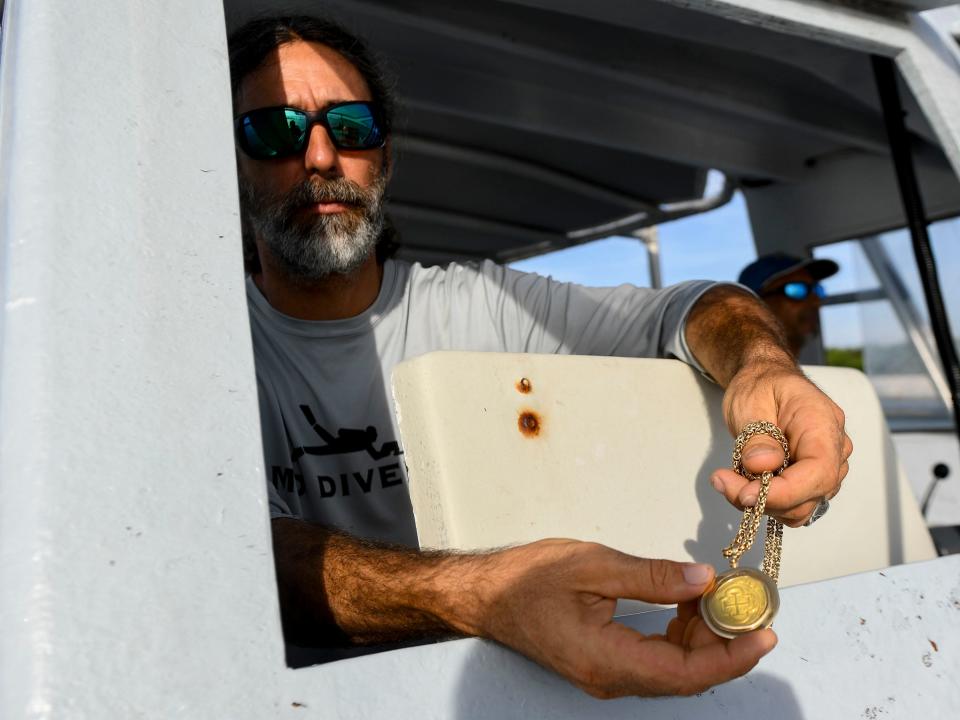
How Michael Perna salvages
On any given day in the summer, when the water is calm and clear, Perna and his first mate Milan "Choppy" Kalelkar can be seen just south of the Sebastian Inlet on The Mighty Mo, an ex-Navy utility launch that was used as a dinghy for a battleship.
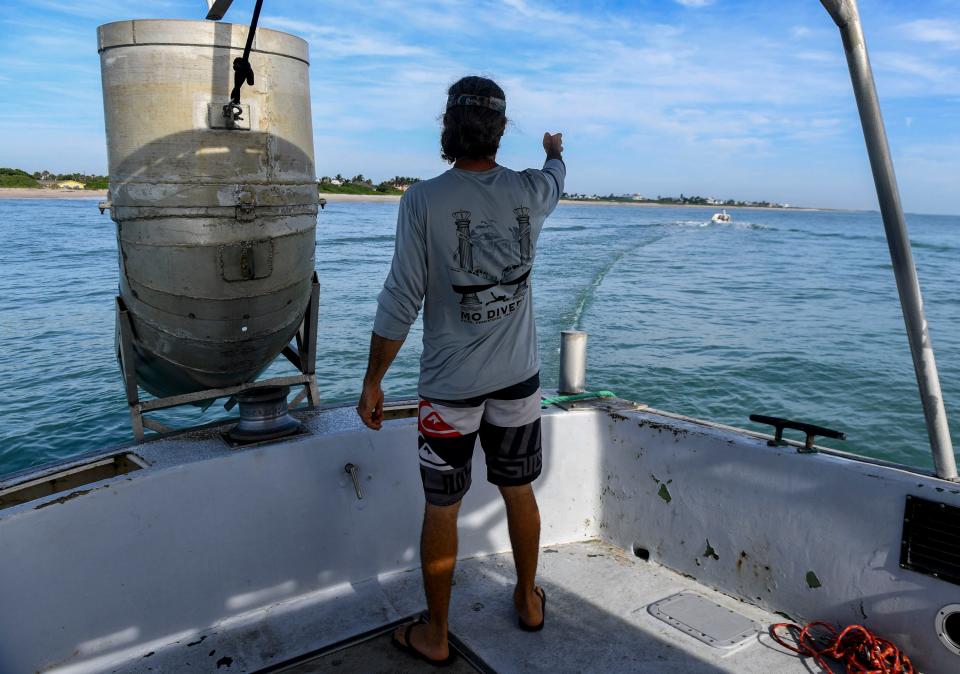
It's named for Perna's mentor, treasure salvager Demostenes “Mo” Molinar, who salvaged with famed treasure hunter Mel Fisher and was with him when he found the treasure-laden wreckage of the Spanish galleon “Nuestra Senora de Atocha” off the Florida Keys.
Perna salvaged alongside Molinar back in the early 2000's.
Perna uses The Mighty Mo to excavate, or move sand around on the ocean floor.
To keep the boat in one spot, the salvagers anchor to three points on the ocean floor. They use the propulsion from the propeller to remove sediment gently, so as not to disturb any artifacts.
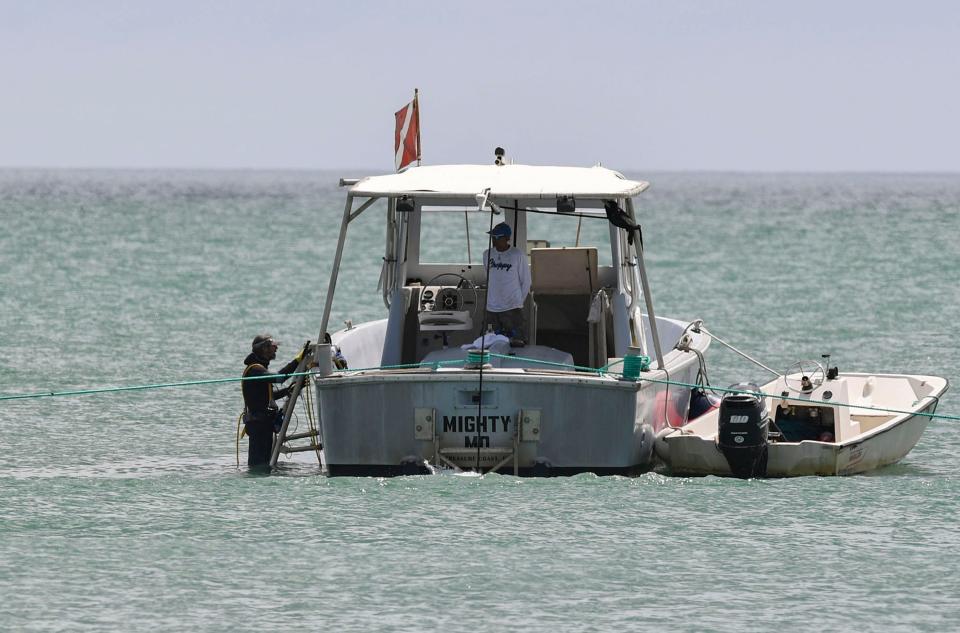
“On any given day we are trying to make about 30 excavations. This would be ideal,” he said. “If we can get 70 days out at sea, for a good summer, we will be in the neighborhood of 1,500 to 2,000 excavations.”
Through surveying and studying archived documents from the 1600s and 1700s, Perna and Kalelkar piece together where they think the shipwrecks are.
With a GPS antenna fixed on the boat, they log their latitude and longitudes for each excavation and detail what they have found or what they didn’t find.
“We often say that we're making a treasure map in reverse," Perna said. "As we do the work, and we find or don't find anything, we put all those dots on the map. Then we can see, over time, where people have been out here doing this. It shows where all of the scattered material is.”
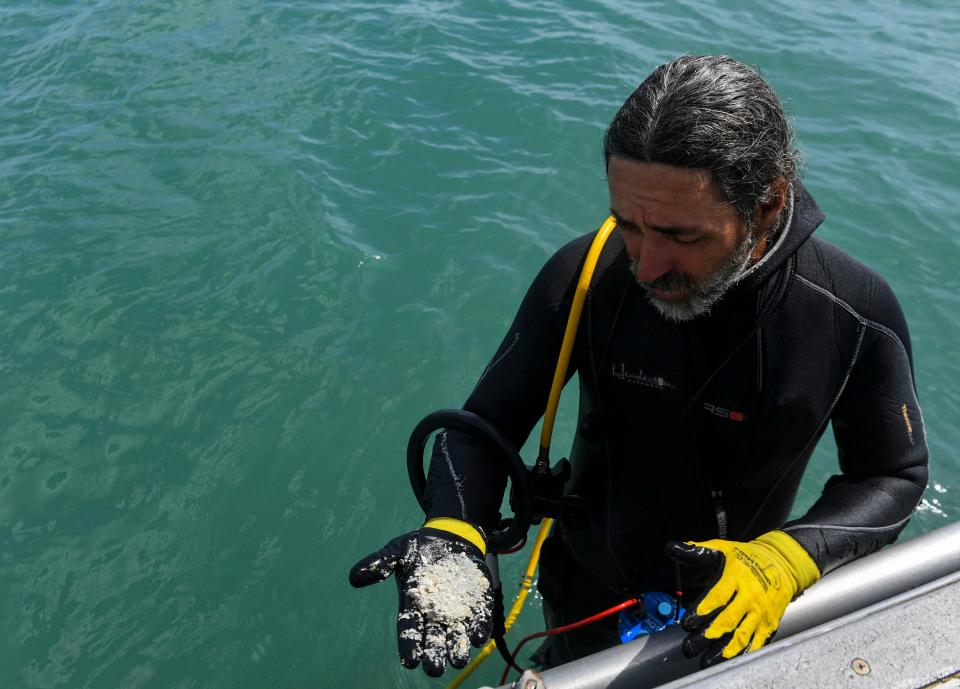
With a general idea in mind, Perna and Kalelkar spend sunrise to sunset working the mile-long trail off Ambersand Beach.
“It just takes guys like us to really go out there and look for it, because it’s a needle in a haystack," he said. "It takes a lot of diligence, a lot of persistence and maybe just a little bit of craziness to keep going.”
What treasures they've found
About five years ago, the two were working off Treasure Shores Beach in Indian River County in about 10 to 12 feet of water, when they stumbled upon what they believed to be a trail of material coming from a wreck to the south, about 6 miles away.
“We found a chest of worked silver artifacts that presumably came from Mexico City and sank on the 1715 fleet," Perna said.
They found about 1,500 coins, a candelabra set, incense burners, a solid silver lion and other artifacts over a span of about two years while following the trail to its end.
"We found two round discs that have an incredible depiction of a mounted horseman reared up on his hind haunches and it kind of looks like a ceremonial battle scene," Perna said.
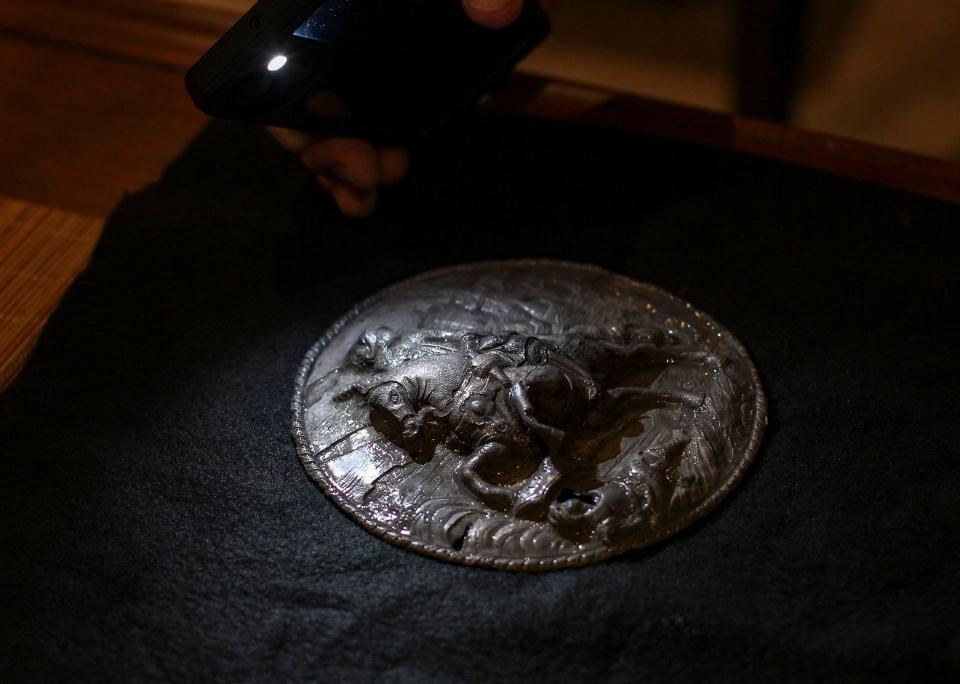
Marsy's Law: Doesn't shield names of police officers, or names of crime victims
Roseland raid: Arcade closed, 2 employees arrested, $20K and gaming machines seized
Fort Pierce bridge: New North Causeway bridge to be tallest on Treasure Coast
The solid silver lion artifact was donated to the state of Florida and will be in the state museum as a representative portion of the rest of the collection.
Recently, the pair have been workingabout a mile from that find, following a breadcrumb trail of single coins.
“Occasionally we’ll clink rings or something,” Perna said. “We certainly say ‘today is the day’ still religiously – almost insanely at this point. We could come back to the dock and our whole lives will have changed.”
This article originally appeared on Treasure Coast Newspapers: Persistence and 'a little bit of craziness' keeps Treasure Coast shipwreck salvor Michael Perna afloat

